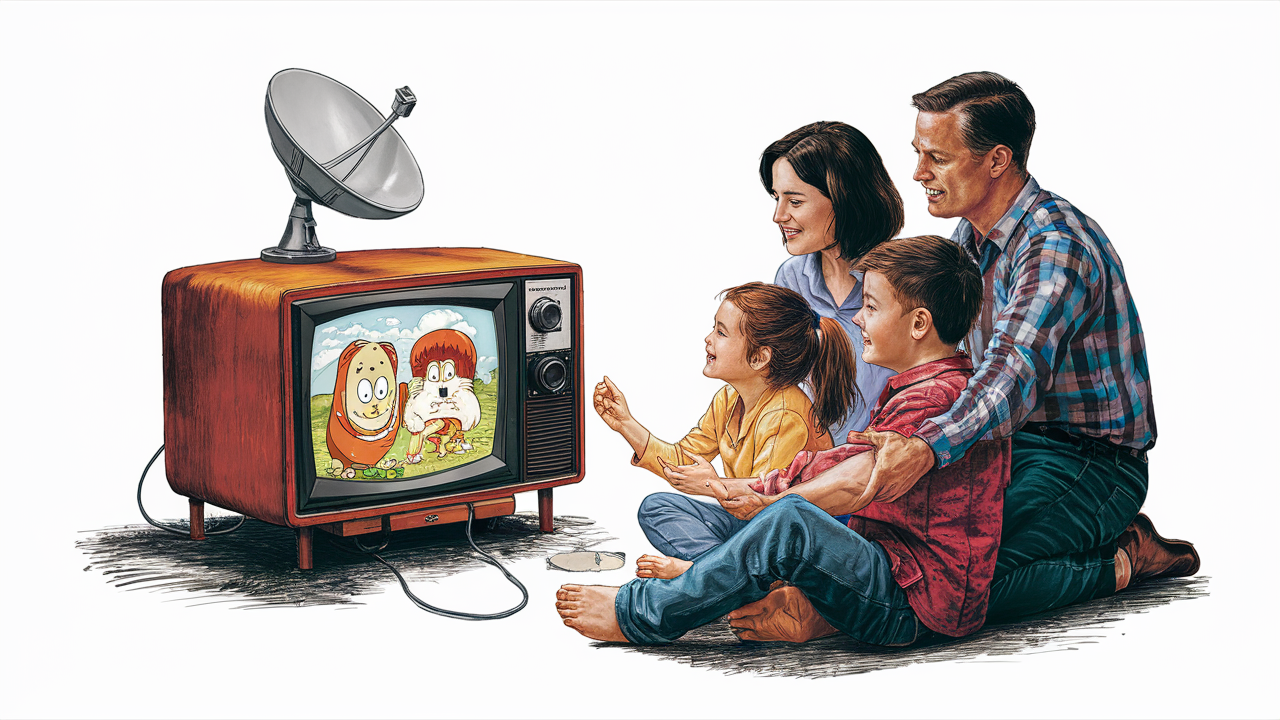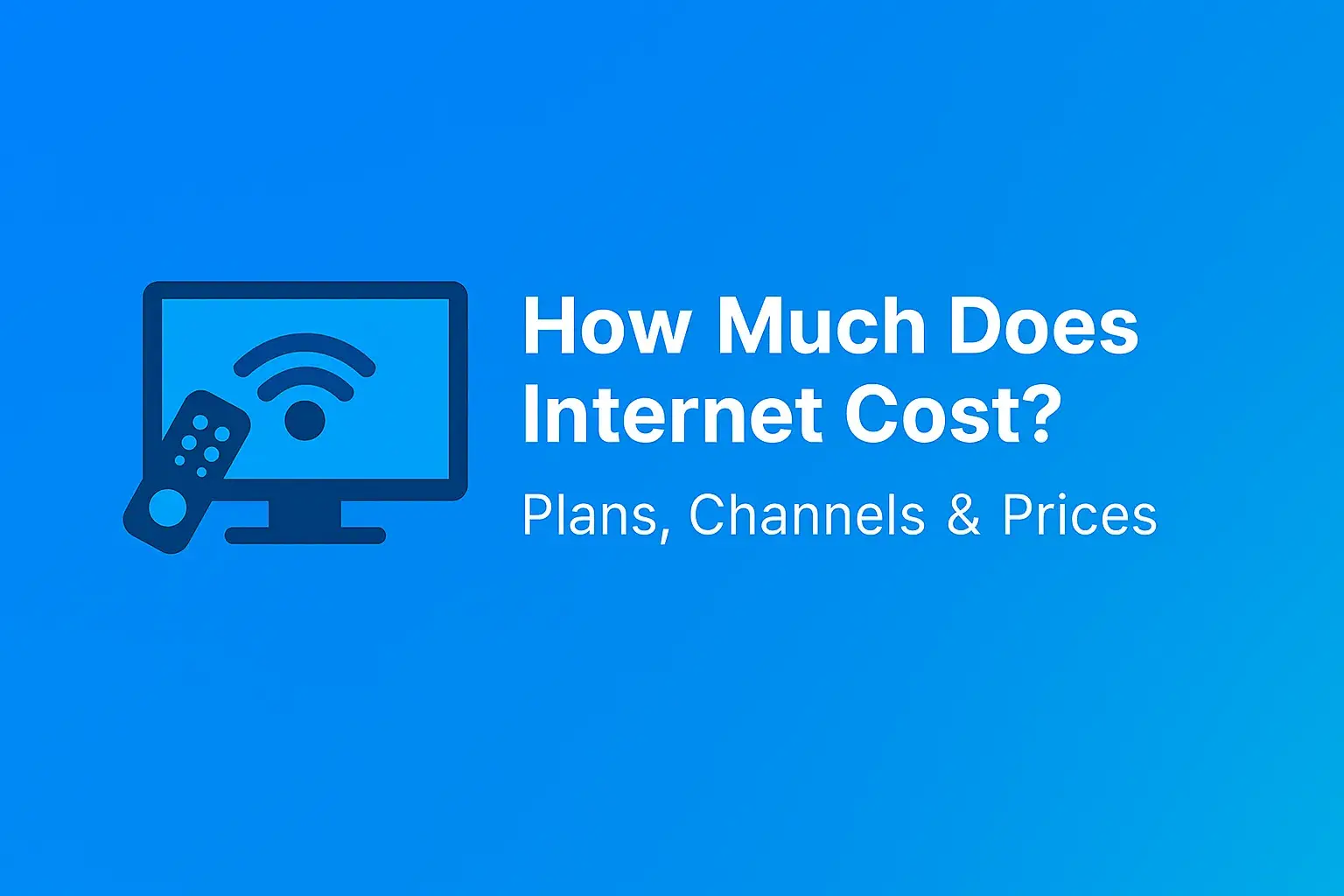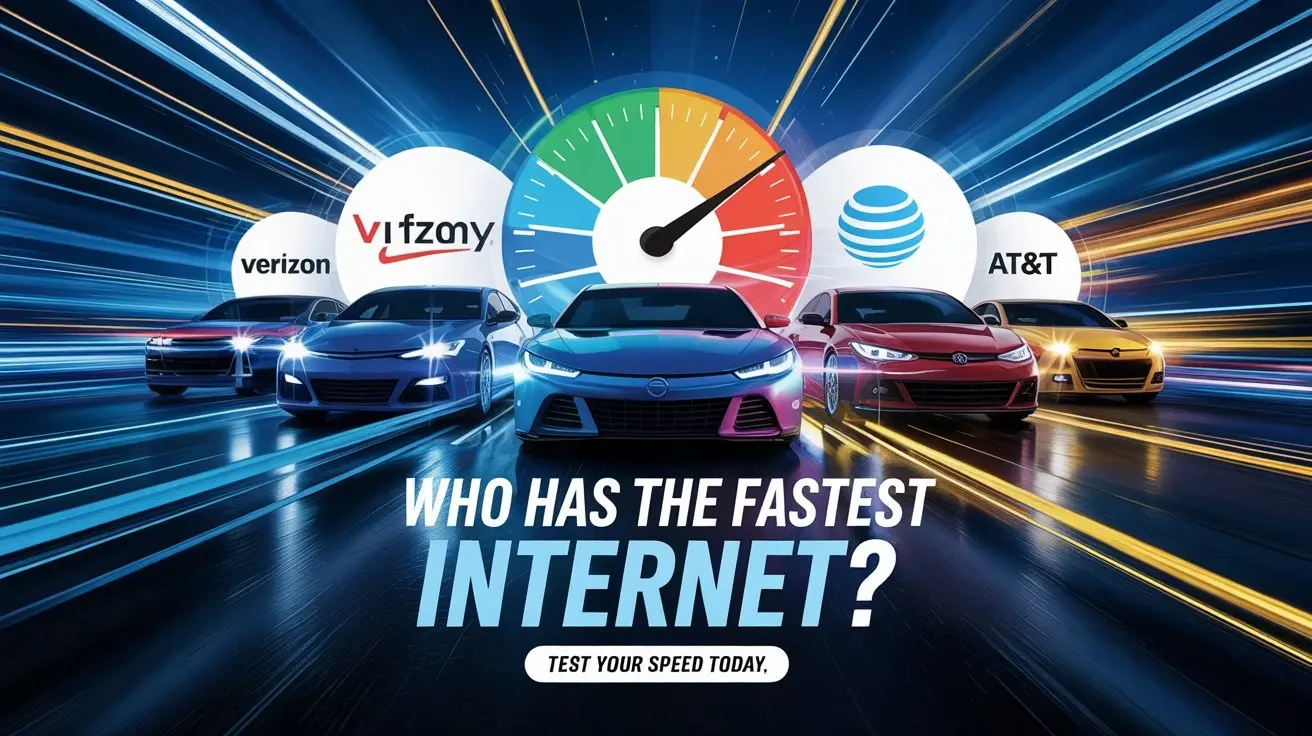What is the most affordable way to watch TV?

Discover the most affordable ways to watch TV in 2025, cutting the cord without sacrificing your favorite shows. We explore streaming services, free options, and smart strategies to save money while enjoying premium entertainment.
Live TV Streaming Services: The Modern Cable Alternative
For many, the dream of cutting the cord hinges on replicating the live TV experience they're accustomed to, but without the exorbitant monthly bills and restrictive contracts. Live TV streaming services have emerged as the primary contenders, offering bundles of popular channels delivered over the internet. These services vary significantly in price, channel selection, and features, making it crucial to understand your options to find the most affordable fit for your household.
Unlike traditional cable or satellite, these services typically operate on a month-to-month subscription model, offering flexibility. You can often pause or cancel your subscription with minimal hassle, a stark contrast to the often-onerous cancellation policies of cable providers. However, the term "affordable" is relative, and these services can still add up, especially if you opt for premium packages or add-ons. Our goal here is to dissect these offerings to identify the true budget champions.
Sling TV: Customizable & Budget-Friendly
Sling TV consistently ranks as one of the most affordable live TV streaming options. Its core strategy revolves around modularity and customization. Instead of offering massive, all-encompassing channel packages, Sling TV breaks down its offerings into two base packages: Sling Orange and Sling Blue. Sling Orange focuses more on ESPN and Disney Channel content, ideal for families and sports fans who prioritize those networks. Sling Blue, on the other hand, leans towards news and entertainment channels like CNN, HGTV, and TBS, catering to a broader audience interested in general programming.
The real affordability comes from the ability to mix and match these base packages or add "Extras" – themed channel packs that can be added to your base subscription for a modest additional fee. For example, if you're a sports enthusiast but don't need the full ESPN suite, you might opt for Sling Blue and add the "Sports Extra" package, which includes channels like NFL RedZone, NBA TV, and NHL Network. This targeted approach allows users to pay only for the channels they actually watch, significantly reducing costs compared to cable's "all-you-can-eat" model, which often includes dozens of channels you never tune into.
As of early 2025, Sling Orange and Sling Blue each start at around $40 per month. Combining them can bring the price to around $55, but even with a few popular Extras, it's often possible to stay under $70 per month, a substantial saving over many traditional cable packages that can easily exceed $100-$150.
fuboTV: Sports Enthusiast's Dream (with caveats)
fuboTV initially positioned itself as a premium sports-first streaming service, and it still excels in that regard. It offers an extensive lineup of sports channels, including many that are hard to find on other streaming platforms, such as a wide array of international soccer leagues, NFL RedZone, MLB Network, and NBA TV. For dedicated sports fans, this comprehensive coverage is a major draw.
However, fuboTV is generally not the most affordable option for general entertainment. Its base package, "Pro," typically starts around $80 per month in 2025, with higher tiers like "Elite" and "Ultimate" pushing the price even further. While it does include a good selection of entertainment and news channels alongside sports, the cost is a significant factor. If your primary goal is the absolute cheapest way to watch TV, fuboTV is likely not your first choice unless your viewing habits are overwhelmingly dominated by sports that are exclusive to its platform.
The value proposition for fuboTV lies in its depth of sports coverage. If you're a die-hard fan who would otherwise pay for multiple specialized sports subscriptions or premium sports tiers on cable, fuboTV might offer a more consolidated, albeit still premium, solution. For the budget-conscious viewer looking for a broad mix of channels, it's less appealing.
Hulu + Live TV: Entertainment Hub
Hulu + Live TV strikes a compelling balance between live sports, entertainment, and on-demand content, making it a strong contender for those seeking a comprehensive yet relatively affordable package. What sets Hulu + Live TV apart is its seamless integration with Hulu's vast on-demand library. Subscribers get access to Hulu's extensive collection of current-season TV shows, classic series, and original content, all within the same subscription. This dual offering can eliminate the need for a separate on-demand streaming service, thereby saving money.
The live TV component offers a broad selection of channels, typically including major broadcast networks (ABC, CBS, Fox, NBC), popular cable channels like ESPN, CNN, FX, and Discovery, as well as a decent sports lineup. As of 2025, Hulu + Live TV usually costs around $77 per month, which includes the on-demand library and unlimited DVR storage. While not the absolute cheapest live TV option, the inclusion of Hulu's on-demand content and its user-friendly interface make it a highly attractive package for many households looking to consolidate their entertainment subscriptions.
The value increases if you opt for bundles that include Disney+ and ESPN+, which are often available for a slightly higher price. This makes it a powerful all-in-one solution for families with diverse viewing interests.
YouTube TV: Comprehensive & User-Friendly
YouTube TV has carved out a significant niche in the live TV streaming market by offering a robust channel lineup and an excellent user experience. It boasts a comprehensive selection of channels, including all major broadcast networks, a wide array of sports channels (like ESPN, Fox Sports, and regional sports networks in many areas), news, and entertainment programming. Its channel count is often among the highest for services in its price bracket.
A key selling point for YouTube TV is its unlimited cloud DVR storage. This feature allows users to record as many shows as they want and keep them for up to nine months, a generous offering that many competing services do not match. The interface is also widely praised for its intuitiveness and ease of use, making it simple to navigate channels, search for content, and manage recordings.
In 2025, YouTube TV typically costs around $73 per month. While this places it in the mid-to-higher tier of live TV streaming services, the sheer breadth of content, unlimited DVR, and superior user experience often justify the price for many. It's a strong contender for those who want a near-cable-like experience without the cable company's baggage, and it's particularly appealing for families due to its support for multiple user profiles and simultaneous streams.
DIRECTV Stream: The Premium Option
DIRECTV Stream, formerly AT&T TV, is positioned as a more premium offering in the live TV streaming space. It aims to provide a comprehensive channel selection that closely mirrors traditional satellite or cable packages, often including more niche sports, movie, and international channels than its competitors. The service offers several tiers, with the base package starting at a higher price point than many other streaming options.
As of 2025, the entry-level "Entertainment" package for DIRECTV Stream typically begins around $75 per month, with higher tiers like "Choice," "Ultimate," and "Premier" escalating the cost significantly, often exceeding $150 per month for the top-tier packages. While it offers a vast array of channels, including many regional sports networks that are crucial for local sports fans, its pricing makes it less likely to be the "most affordable" choice for the average viewer.
However, DIRECTV Stream does offer some unique features, such as the ability to watch on unlimited devices at home and up to three devices on the go, and a generous 140-hour cloud DVR. For those who absolutely need specific channels or regional sports networks not available elsewhere and are willing to pay a premium for that comprehensive access, DIRECTV Stream is a viable, albeit expensive, cord-cutting solution. For budget-conscious individuals, it's generally not the primary recommendation.
Live TV Streaming Comparison Table
To help visualize the differences, here's a simplified comparison of some popular live TV streaming services as of early 2025. Prices are approximate and may vary based on promotions, add-ons, and regional availability. Data is based on standard packages.
| Service | Starting Price (Approx. Monthly) | Key Features | Best For |
|---|---|---|---|
| Sling TV (Orange or Blue) | $40 | Customizable base packages, add-on "Extras" | Budget-conscious users, those who want specific channels |
| YouTube TV | $73 | Unlimited DVR, comprehensive channel lineup, user-friendly | Families, those seeking a complete cable replacement |
| Hulu + Live TV | $77 | Includes on-demand Hulu library, unlimited DVR | Users wanting live TV and on-demand content in one package |
| fuboTV (Pro) | $80 | Extensive sports channels, good live TV selection | Serious sports fans |
| DIRECTV Stream (Entertainment) | $75 | Broad channel selection, similar to cable packages | Users needing a wide variety of channels, including RSNs |
On-Demand Streaming Services: Binge-Watching on a Budget
While live TV streaming services aim to replicate the traditional television experience, on-demand streaming services offer a different, often more affordable, way to consume content. These platforms provide vast libraries of movies, TV shows, and original programming that you can watch anytime, anywhere, on a variety of devices. The key to affordability here lies in selecting services that align with your viewing preferences and avoiding subscription overload.
The price point for these services is generally much lower than live TV options, with most subscriptions ranging from $7 to $20 per month. However, the sheer number of available services can be overwhelming, and subscribing to too many can quickly become more expensive than a single cable bill. The strategy for affordability is to be selective, focusing on the services that offer the content you're most likely to watch and considering bundles or ad-supported tiers.
Netflix: The King of Content
Netflix remains a dominant force in the streaming world, offering a massive library of movies, TV series, documentaries, and critically acclaimed original content. While it has faced increased competition, its extensive catalog and consistent output of new shows and films keep it a popular choice. Netflix offers several tiers, including an ad-supported plan which is its most affordable option.
As of 2025, Netflix's ad-supported plan typically costs around $6.99 per month, offering a significant saving over its ad-free tiers. The standard ad-free plan is usually around $15.49, and the premium ad-free plan (offering 4K streaming and more simultaneous screens) is around $19.99. For the absolute most affordable Netflix experience, the ad-supported tier is the way to go, provided you don't mind occasional commercials. The content library is vast, making it a strong contender for general entertainment viewing.
Max (HBO Max): Prestige Programming
Max, the rebranded service combining HBO Max and Discovery+, offers a compelling mix of prestige television from HBO, blockbuster movies from Warner Bros., and a vast library of unscripted content from Discovery. It's known for its high-quality original series, documentaries, and a strong film catalog.
Max offers a few different plans in 2025. The most affordable option is typically the "With Ads" plan, costing around $9.99 per month. The "Ad-Free" plan is usually around $15.99 per month, and a "Ultimate Ad-Free" plan (offering 4K streaming and more downloads) can be around $19.99 per month. For those who value HBO's critically acclaimed dramas and Warner Bros. films, the ad-supported Max plan presents a relatively affordable way to access this premium content.
Disney+: Family Fun & More
Disney+ is the go-to streaming service for families and fans of Disney, Pixar, Marvel, Star Wars, and National Geographic. It boasts an extensive library of beloved animated classics, blockbuster Marvel movies, and the entire Star Wars saga, alongside a growing slate of original series and films.
In 2025, Disney+ offers a few pricing tiers. The most budget-friendly is the "With Ads" plan, typically priced around $7.99 per month. The ad-free version usually costs around $13.99 per month. For households with children or fans of these specific franchises, Disney+ offers immense value, especially on its ad-supported tier, making it a very affordable entertainment option.
Amazon Prime Video: Included Perks
Amazon Prime Video is unique in that it's included as part of an Amazon Prime subscription. This means that if you're already paying for Amazon Prime for its shipping benefits, you get access to a substantial library of movies, TV shows, and Amazon Originals at no additional cost. This makes it one of the most cost-effective options for many consumers.
The Prime Video library includes a mix of licensed content and critically acclaimed originals like "The Boys" and "The Marvelous Mrs. Maisel." While the quality of licensed content can vary, the sheer volume and the fact that it's bundled with Prime make it an excellent value. As of 2025, Amazon Prime costs around $14.99 per month or $139 per year. For those who utilize other Prime benefits, Prime Video is essentially free, making it arguably the most affordable way to access a significant streaming library.
Apple TV+: Original Excellence
Apple TV+ has distinguished itself by focusing exclusively on high-quality original programming. While its library is smaller than many competitors, it features critically acclaimed shows and movies such as "Ted Lasso," "Severance," and "CODA." The emphasis is on quality over quantity.
Apple TV+ typically costs around $9.99 per month. While it doesn't have the vast back catalog of licensed content, its original series are often award-winning and provide excellent value for their price. For users who appreciate high-quality, curated content and don't need a massive library, Apple TV+ is a very affordable and worthwhile subscription.
Peacock: NBCUniversal's Offering
Peacock, NBCUniversal's streaming service, offers a mix of current NBC and Universal content, classic shows, movies, and live sports, including Premier League soccer. It also features a significant amount of free content.
Peacock has a free tier that provides access to a limited selection of content. Its paid tiers in 2025 typically include a "Premium" plan for around $5.99 per month (with ads) and a "Premium Plus" plan for around $11.99 per month (ad-free, with local NBC channels). The free tier makes it a very attractive option for budget-conscious viewers looking for basic entertainment, while the premium tiers offer more comprehensive access at competitive prices.
Paramount+ (CBS & Beyond)
Paramount+ is home to content from CBS, Paramount Pictures, Nickelodeon, MTV, Comedy Central, and more. It features a mix of current TV shows, classic series, movies, and live sports, including NFL games broadcast on CBS and UEFA Champions League soccer.
In 2025, Paramount+ offers a "Essential" plan for around $5.99 per month (with ads and no local CBS station) and a "Paramount+ with SHOWTIME" plan for around $11.99 per month (ad-free, with local CBS station and SHOWTIME content). The Essential plan provides a solid selection of content at a very low price point, making it a strong contender for affordable entertainment, especially for fans of CBS programming and live sports.
On-Demand Streaming Comparison Table
Here's a snapshot of popular on-demand streaming services and their typical pricing in early 2025. Prices are approximate and can vary.
| Service | Starting Price (Approx. Monthly) | Key Features | Best For |
|---|---|---|---|
| Netflix (With Ads) | $6.99 | Vast library, popular originals | General entertainment, those who don't mind ads |
| Amazon Prime Video | Included with Prime ($14.99/mo or $139/yr) | Bundled with Amazon Prime benefits | Existing Amazon Prime members |
| Disney+ (With Ads) | $7.99 | Disney, Pixar, Marvel, Star Wars, Nat Geo | Families, fans of Disney franchises |
| Peacock (Premium) | $5.99 | NBCUniversal content, live sports (Premier League) | Fans of NBC shows, budget-conscious sports viewers |
| Paramount+ (Essential) | $5.99 | CBS content, NFL, UEFA Champions League | Fans of CBS shows, live sports enthusiasts |
| Max (With Ads) | $9.99 | HBO originals, Warner Bros. movies | Fans of prestige TV and blockbuster films |
| Apple TV+ | $9.99 | High-quality original series and films | Viewers who prioritize quality over quantity |
Free Streaming Options: No Subscription Required
For those who are truly looking for the most affordable way to watch TV, the answer often lies in free streaming options. These services, typically supported by advertisements, offer a surprising amount of content without any monthly cost. While they may not have the latest blockbusters or the most popular live channels, they provide a viable alternative for casual viewers or those looking to supplement their paid subscriptions.
The landscape of free streaming has expanded dramatically in recent years, with major media companies and dedicated platforms offering a wide array of movies, TV shows, and even live channels. The trade-off, of course, is the presence of commercials, which can sometimes be more frequent or intrusive than traditional broadcast TV. However, for a zero-dollar monthly price tag, many viewers find this a worthwhile compromise.
Pluto TV: Live Channels, Free
Pluto TV, owned by Paramount, is a leading free, ad-supported streaming service. It mimics the traditional TV experience by offering hundreds of "channels" that broadcast content on a schedule, alongside on-demand options. The channels are curated into categories like news, comedy, movies, and lifestyle. You'll find dedicated channels for popular shows, classic movies, and even live news from various providers.
The appeal of Pluto TV lies in its vast selection and the illusion of live TV without any cost. It's a great way to discover new content or revisit old favorites without committing to a subscription. Its content library is constantly expanding, making it a reliable source for free entertainment.
Tubi: Movies & TV Shows Galore
Tubi, owned by Fox Corporation, is another popular free streaming service that offers a massive library of movies and TV shows. Unlike Pluto TV, Tubi focuses more on an on-demand model, allowing users to browse and watch content whenever they choose. Its library includes a wide range of genres, from Hollywood blockbusters and cult classics to popular TV series.
Tubi's content is ad-supported, meaning you'll encounter commercials during playback. However, the sheer volume of available titles and the absence of a subscription fee make it an incredibly attractive option for budget-conscious viewers. It's a fantastic resource for movie buffs and TV show bingers looking for free entertainment.
The Roku Channel: Accessible Entertainment
The Roku Channel is available not only on Roku devices but also via web browsers and other platforms. It offers a mix of live linear channels and on-demand content, including movies, TV shows, and Roku Originals. The content spans various genres, and it's all available for free with ad support.
The Roku Channel has been steadily expanding its content offerings, making it a competitive player in the free streaming space. Its accessibility across multiple platforms enhances its appeal, allowing a broad audience to enjoy its free library.
Freevee (formerly IMDb TV): Ad-Supported Streaming
Amazon's Freevee, formerly known as IMDb TV, is an ad-supported streaming service that offers a curated selection of movies and TV shows. It features a mix of popular Hollywood titles, classic series, and original programming. As part of the Amazon ecosystem, it benefits from Amazon's extensive content acquisition and distribution capabilities.
Freevee provides a decent library of content without requiring a subscription. While it may not have the same breadth as some of the larger paid services, it's a solid free option for those looking for popular titles and original content, all delivered with commercials.
YouTube: User-Generated & Licensed Content
While YouTube is primarily known for its user-generated content, it also offers a significant amount of free, ad-supported movies and TV shows. You can find a vast library of licensed content that can be streamed for free, alongside YouTube's own original series and a wide array of free channels. The experience is ad-supported, similar to other free streaming platforms.
The sheer volume of content on YouTube, combined with its free licensed movie and TV show offerings, makes it an indispensable part of any affordable entertainment strategy. It's a platform where you can find almost anything, often for free.
Over-the-Air (OTA) Antennas: Local Channels for Free
For many, the most significant loss when cutting the cord is access to local broadcast channels like ABC, CBS, Fox, and NBC. The most affordable way to regain these channels is by using an Over-the-Air (OTA) antenna. These antennas receive digital broadcast signals directly from local TV stations.
The cost of an OTA antenna can range from $20 for a basic indoor model to $100 or more for more powerful outdoor antennas. Once purchased, there are no monthly fees. The number of channels you can receive depends on your location and the type of antenna you use, but many major metropolitan areas offer dozens of channels, including news, weather, and popular network programming. This is a one-time purchase that provides ongoing free access to local live TV.
Free Streaming Options Comparison Table
Here's a look at some of the most popular free streaming services available in 2025.
| Service | Content Type | Ad Support | Key Features |
|---|---|---|---|
| Pluto TV | Live Channels & On-Demand | Yes | Mimics live TV, curated channels, no signup required |
| Tubi | On-Demand Movies & TV Shows | Yes | Vast library of licensed content |
| The Roku Channel | Live Channels & On-Demand | Yes | Accessible on multiple platforms, Roku Originals |
| Freevee | On-Demand Movies & TV Shows | Yes | Curated library, Amazon-backed |
| YouTube | User-Generated, Licensed Movies/TV, Live | Yes | Extensive content, free licensed movies/shows |
| OTA Antenna | Local Broadcast Channels | No | One-time hardware cost, free local live TV |
Developing Your Ultimate Cord-Cutting Strategy
The "most affordable way to watch TV" isn't a one-size-fits-all answer. It's a personalized strategy tailored to your specific viewing habits, needs, and budget. Successfully cutting the cord and saving money requires careful planning and a clear understanding of what you want to watch and how you want to watch it. Here’s a step-by-step guide to building your optimal, budget-friendly TV setup.
Step 1: Assess Your Viewing Habits
Before diving into subscriptions, take stock of what you and your household actually watch. Do you primarily watch live news and sports? Are you a binge-watcher of specific TV series? Do you rely on local channels for weather and emergency information? Understanding your core viewing habits is the foundation of an affordable strategy. For example, if you rarely watch live TV but love documentaries, a few on-demand services might be sufficient. If live sports are paramount, a live TV streaming service with strong sports offerings will be necessary.
Step 2: Identify Must-Have Channels & Content
Based on your viewing habits, list the absolute must-have channels and specific shows or movies. For live TV, this might include channels like ESPN, CNN, HGTV, or your local network affiliates. For on-demand, it could be specific original series on Netflix or HBO, or a particular movie franchise. This list will guide your selection of streaming services, helping you avoid paying for channels or content you don't care about.
Step 3: Evaluate Your Internet Speed
Streaming TV, especially live TV, requires a stable and sufficiently fast internet connection. Most live TV streaming services recommend a minimum download speed of 25 Mbps for a seamless experience, especially if multiple devices are streaming simultaneously. If your current internet plan is too slow, you might need to upgrade. Factor the cost of a reliable internet plan into your overall TV budget. An unreliable connection can lead to frustrating buffering and a poor viewing experience, negating any cost savings.
Step 4: Bundle and Save (Smartly)
Many streaming services offer bundles that can reduce costs. For example, Disney+ often bundles with Hulu and ESPN+. Amazon Prime Video is bundled with Amazon Prime. Consider if these bundles align with your must-have content. Sometimes, bundling multiple services from the same provider can offer a discount, but always compare the bundled price against the cost of individual subscriptions to ensure you're truly saving money.
Step 5: Consider Device Compatibility
Ensure the streaming services you choose are compatible with the devices you already own (smart TVs, streaming sticks like Roku or Fire TV, gaming consoles, smartphones, tablets). If you need to purchase new devices, factor that cost into your initial setup. Some services might offer better experiences on certain devices, so it's worth checking reviews and compatibility lists.
Step 6: Manage Subscriptions Wisely
The beauty of most streaming services is their month-to-month flexibility. Don't be afraid to subscribe to a service for a month to catch up on a specific show or watch a particular sporting event, and then cancel it. Rotate your subscriptions based on your viewing needs. For example, you might subscribe to a sports service during football season and then switch to a service with more movie options during the summer. This "subscription cycling" can significantly reduce your overall annual spending on entertainment.
Beware of Hidden Costs and Pitfalls
While the allure of saving money by cutting the cord is strong, it's important to be aware of potential hidden costs and pitfalls that can erode your savings. A truly affordable TV strategy accounts for all expenses, not just the advertised monthly subscription fees.
Internet Speed Upgrades
As mentioned, streaming requires robust internet. If your current plan isn't sufficient, you may need to upgrade. Internet service providers often charge higher prices for faster speeds, and these costs can add up. Ensure you understand your ISP's pricing structure and any potential price increases after introductory periods.
Device Costs
While many people already own smart TVs or streaming devices, some might need to purchase new hardware to access streaming services. A good streaming stick or box can cost anywhere from $30 to $100. Factor this initial investment into your cord-cutting budget.
Subscription Creep
It's easy to fall into the trap of "subscription creep," where you accumulate more and more individual streaming service subscriptions. While each service might seem affordable on its own, the combined monthly cost can quickly rival or even exceed your old cable bill. Regularly review your subscriptions and cancel any that you're not actively using.
Data Caps and Overage Fees
Some internet service providers (ISPs) impose data caps on their plans. Streaming video is a significant data consumer, and exceeding your data cap can result in hefty overage fees or even a reduction in your internet speed. If your ISP has data caps, ensure your estimated streaming usage falls within the limit, or consider an unlimited data plan, which may come at an additional cost.
Conclusion: Your Path to Affordable TV
The quest for the most affordable way to watch TV in 2025 leads to a multifaceted answer, combining smart choices among live TV streaming, on-demand services, and leveraging free content. The absolute cheapest path often involves a combination of Over-the-Air (OTA) antennas for local channels, supplemented by free ad-supported services like Pluto TV, Tubi, or Freevee for entertainment. For those who require more extensive programming, a carefully selected live TV streaming service like Sling TV, with its customizable packages, or a budget-friendly on-demand service with an ad-supported tier, can provide significant savings over traditional cable. Remember to assess your viewing habits, identify your must-have content, and be mindful of internet costs and subscription creep. By strategically combining these options and managing your subscriptions wisely, you can achieve a highly affordable and satisfying TV viewing experience.





